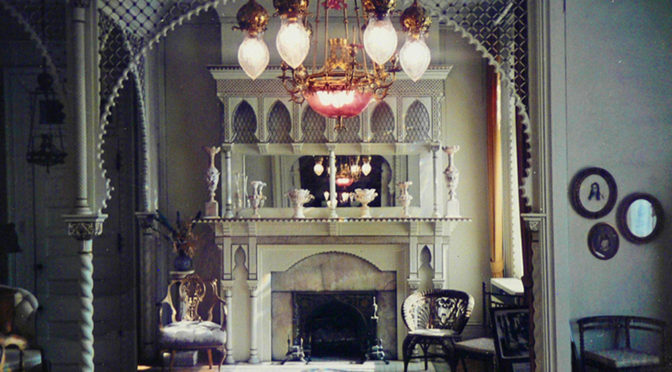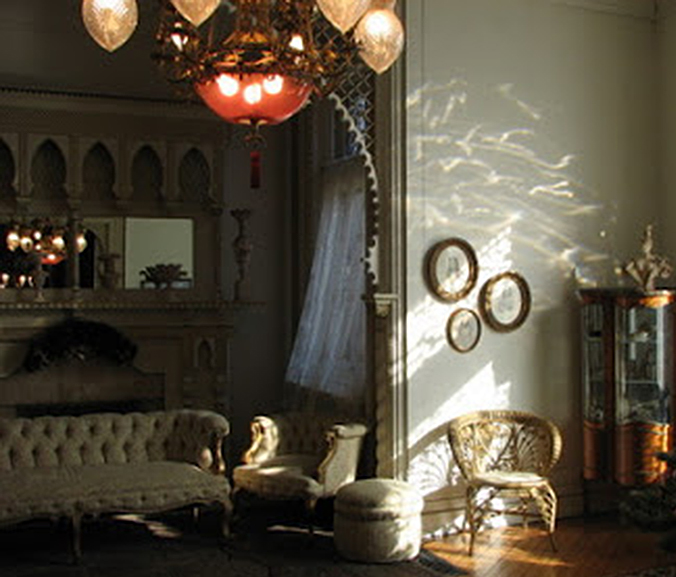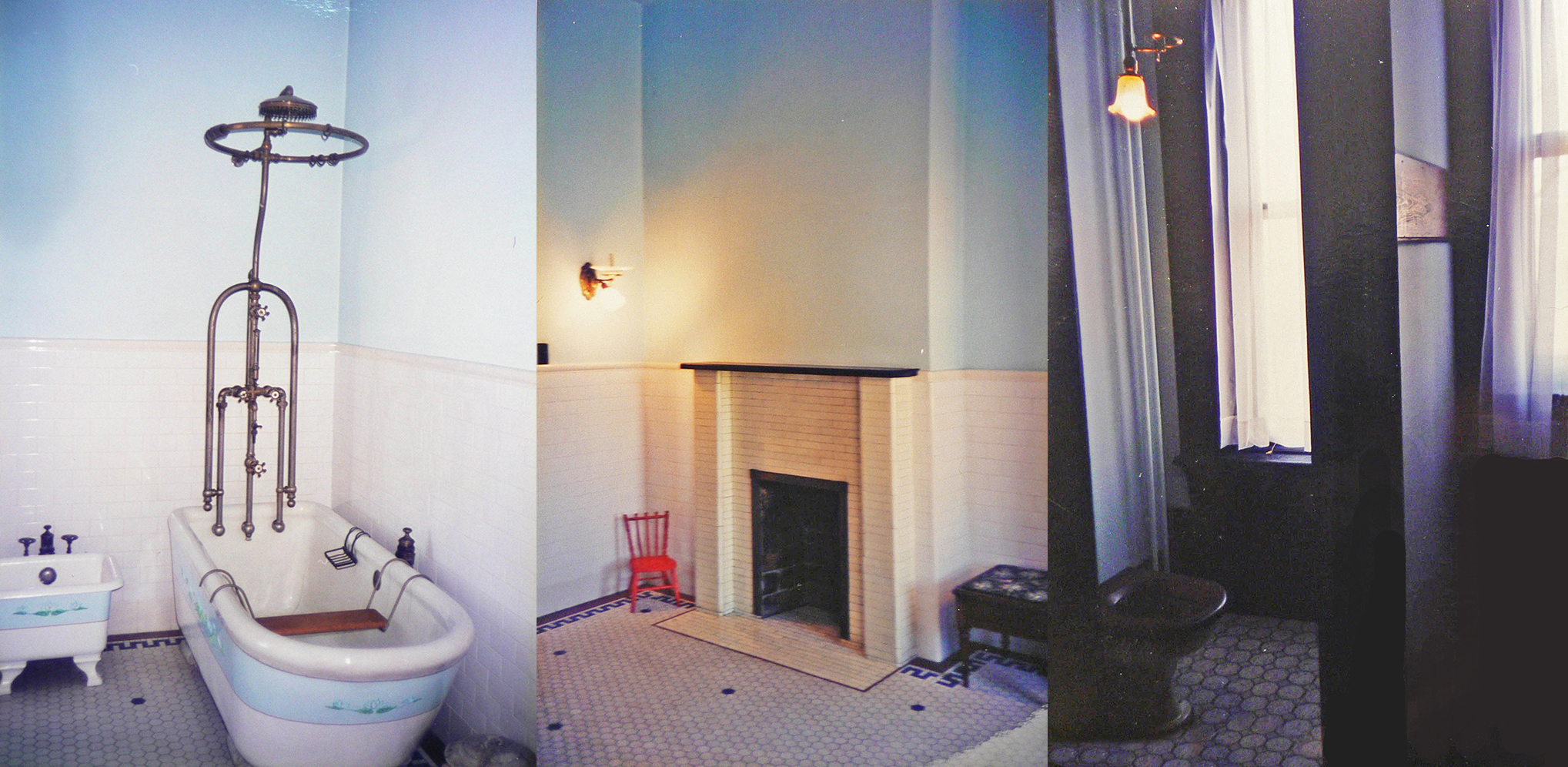![]()
Something I’ve discovered while talking with readers is how fascinated people are by how an author gets from general ideas to a finished story. For me, one huge part of preparing to write is setting up locations–almost as if I were preparing to shoot a film: that means deciding exactly where the book’s action will take place. Not just Appalachia, but a particular ridge, and a particular holler, with a river and a mine and a town with streets and businesses. Not just a college, but a college with its own unique personality and reason for being, with its own history. And not just a big old house, but an architecturally viable and complex one, with its own history and odd little quirks.
So when I decided that my ill-fated college founder was going to build himself a house, it had to be one that worked–on all those levels. Durham’s Eyrie is that house:
The house rose like a fortress from the hillside, surrounded by ancient tulip poplars. In the distance, under the eaves of the forest, I could see the family crypt. But the house itself held my eye, as always. Red brick towers and turrets, peaks and gables rose from a limestone foundation into three stories of massive wall. Decorative chimneys towered above the slate roof, and relief sculptures carved in red sandstone flowed up the main shaft. Moorish columns flanked the broad entryway above the front steps, framing the jewel-like stained glass doors.
But how did I get from “I need a big old house,” to the house I just described? Well, first I knew it had to be Victorian, because that was the time period when Obadiah would have been setting up housekeeping. Second, no self-respecting coal baron–and particularly not one fleeing a curse–would built a light, airy, clapboard Painted Lady: he’d build a castle. Once that was decided, all I had to do was start doing research on Victorian mansions . . . stone mansions. I didn’t want to go far afield in my research, because I wanted something authentic for the area. And since I was in Louisville at the time, that’s where I started looking.

Enter the real-life Victorian mansion built by the Howard family of Ohio River shipyards fame and located on the northern bank of the Ohio. You can see it set back from the Jeffersonville, Indiana waterfront, right across the river from Louisville. Durham’s Eyrie would have been built around 1880, ten years before the Howard home, so the period was right, and I was already familiar with the house. Add a few blast screens to cover the oversized windows, and the building could almost withstand a siege. What more could I want? In the end, except for its location, the Howard house reinvented itself almost exactly as Durham’s Eyrie–at least on the outside.
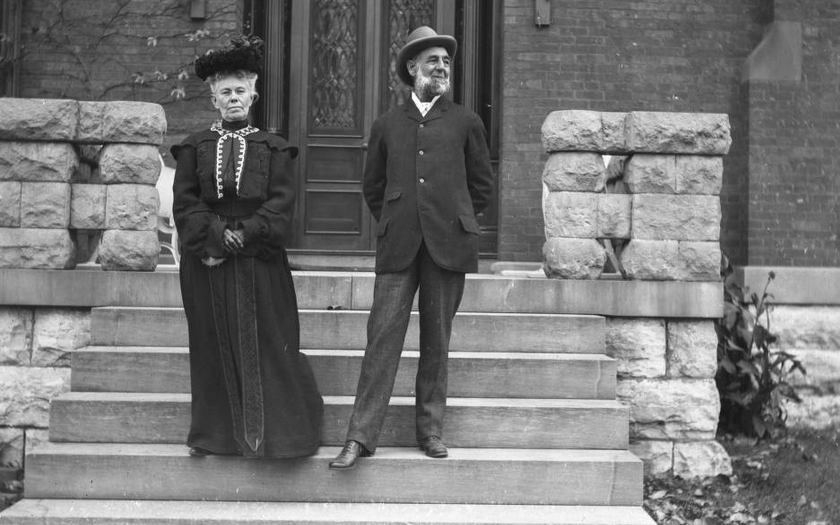
By the way, the “Howard Home” (as it is listed on the National Register of Historic Places), was built in 1890 by Edmonds J. Howard of the Howard Shipyards family. Today it welcomes visitors as the Howard Steamboat Museum, featuring displays from the shipyards and Howard family history.
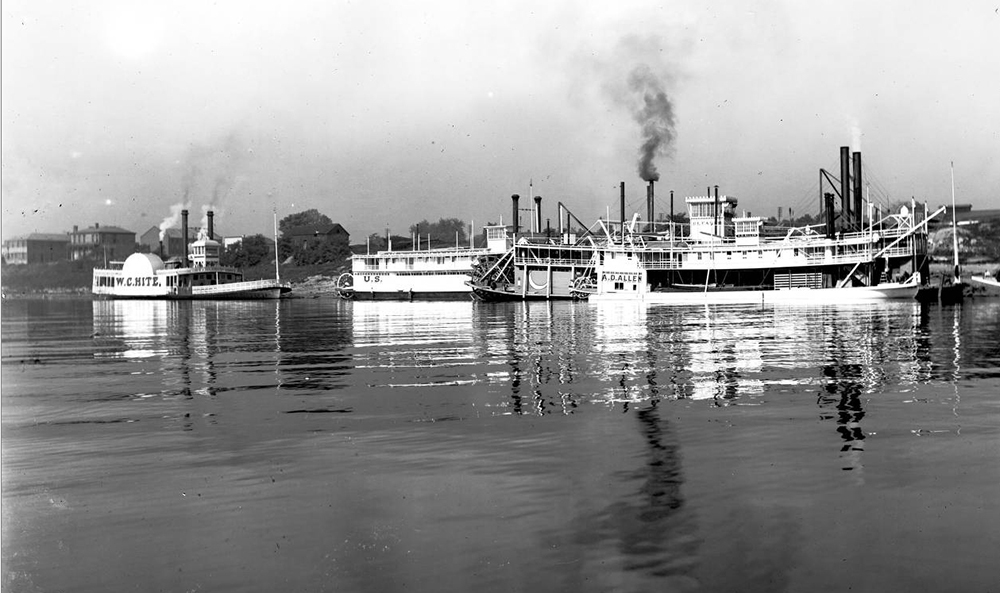
Anyway, with the house selected, I needed photographs so I could play around with visual details as I wrote. So I went, camera in hand, to ask the Howard Museum docents if they would let me creep around places tourists didn’t normally go, so that I could get an idea of the house’s layout for my book . . . and they very kindly took me all around, even onto the third floor and into the attics. Unfortunately (for my purposes), much of the house is now used for the steamboat displays and looks little like it did when the family lived there, so I’ve supplemented my own photos with some turn-of-the-century photos from The Howard Steamboat Collection at the University of Louisville.
And . . . the stained glass doors described in Madness are not from the Howard house), but from the Old 851 Mansion in Louisville.
![]()
So follow me now on a virtual tour of the original inspiration for Durham’s Eyrie. Below is the main entrance, with the original beveled glass. As I just said, for This Madness of the Heart I changed the doors to resemble the ones at the Old 851 Mansion since the Howard glass doors weren’t stained glass.
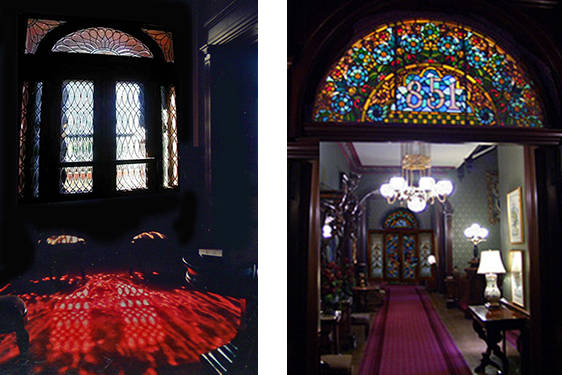
![]()
The main entrance of the Howard mansion faces the stairway leading up to a landing and on from there to the second floor. In Durham’s Eyrie, Jack’s magical stained glass window was on the landing where the red and gold glass is in the photo.
Jack’s stained glass glowed above a daybed, filling the landing like a half-remembered dream. Mythical birds and flowers intertwined in a jeweled mosaic through fantastic trees, dappling the dark stairs with their bright shadows. Fragile, delicate, glorious, this window Jack had fashioned for Viola rivaled Tiffany at its height. We stood silent, worshipers at a shrine.

![]()
The room where Viola entertains guests (and torments college administrators) is a combination of several Howard rooms, including the room at the top of this page. There’s a period photo of the parlor below and an alcove in the dining room–which inspired the “cherries” in Viola’s windows.
My tale of high tea at Durham’s Eyrie floated through the air around us as I painted Probeck’s predicament amongst the tea cups, his stunned face splashed red with the light of the cherry windows. I enjoyed the afternoon all over again, and this time I didn’t have to choke back the laughter.
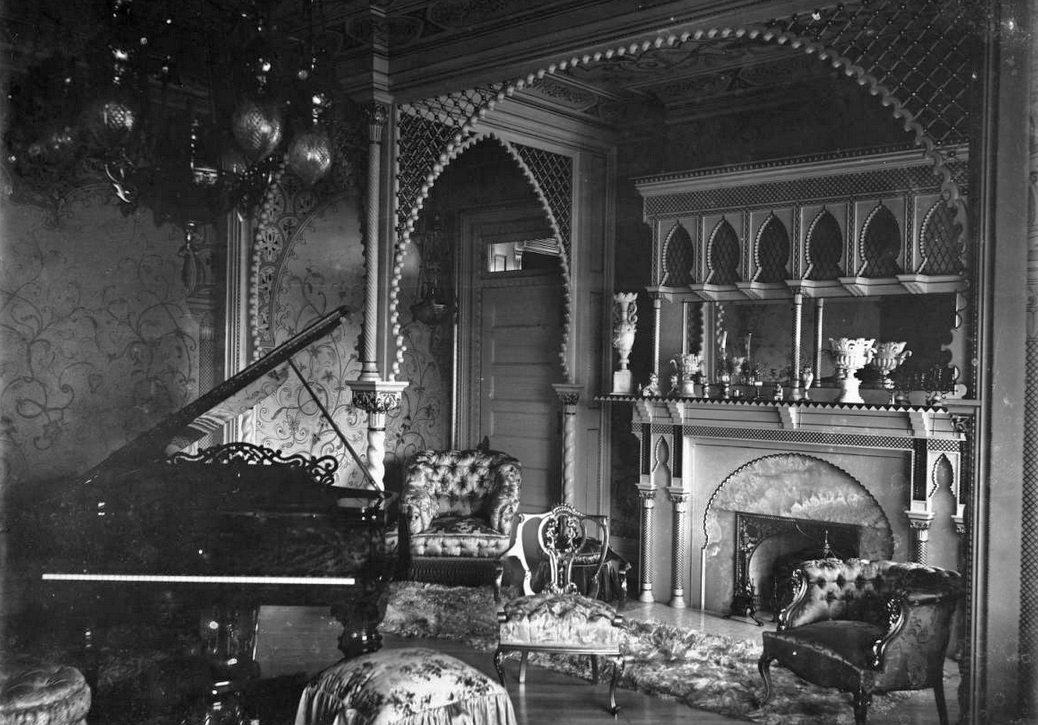
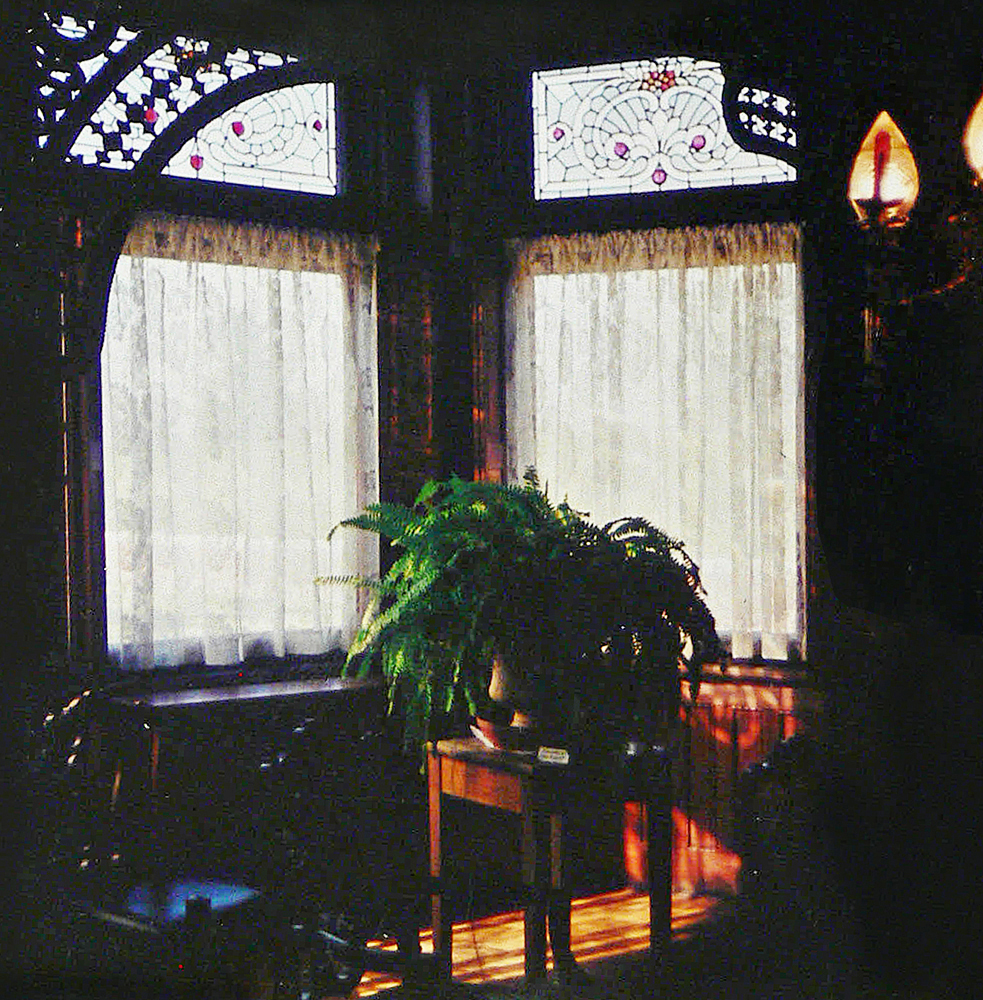
![]()
Viola’s library is partly based on this old photo of the Howard library, although, since no bookcases have survived in the house, I used other Victorian libraries as models as well. Viola’s desk is based on this handmade original from the Howard mansion.
He led me straight to Viola’s library, a handsome room lined with glass-front bookshelves that doubled as her office. Viola beamed at us around the gilded oak leaves and acorns festooning her heavy carved oak desk. The giant secretary towered over her, transforming her for a moment into a bright-eyed child rather than the matriarch she was.

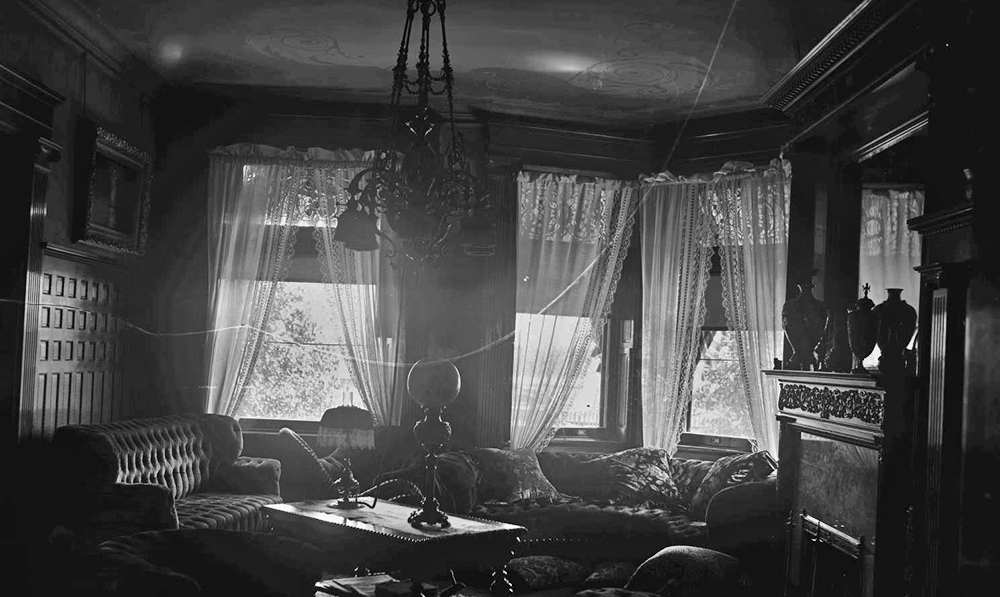

![]()
Here’s another view of the dining room (with cherry window), and the masculine domain, the smoking room.

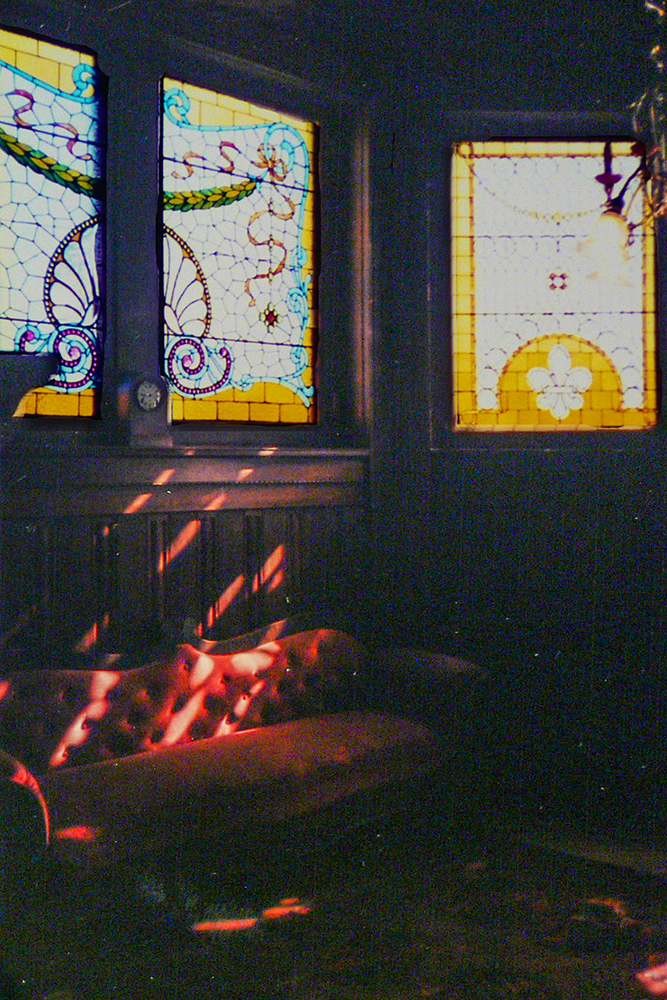
![]()
You can see the master bedroom (Viola’s) below, both in my recent photos and the 1905 versions:
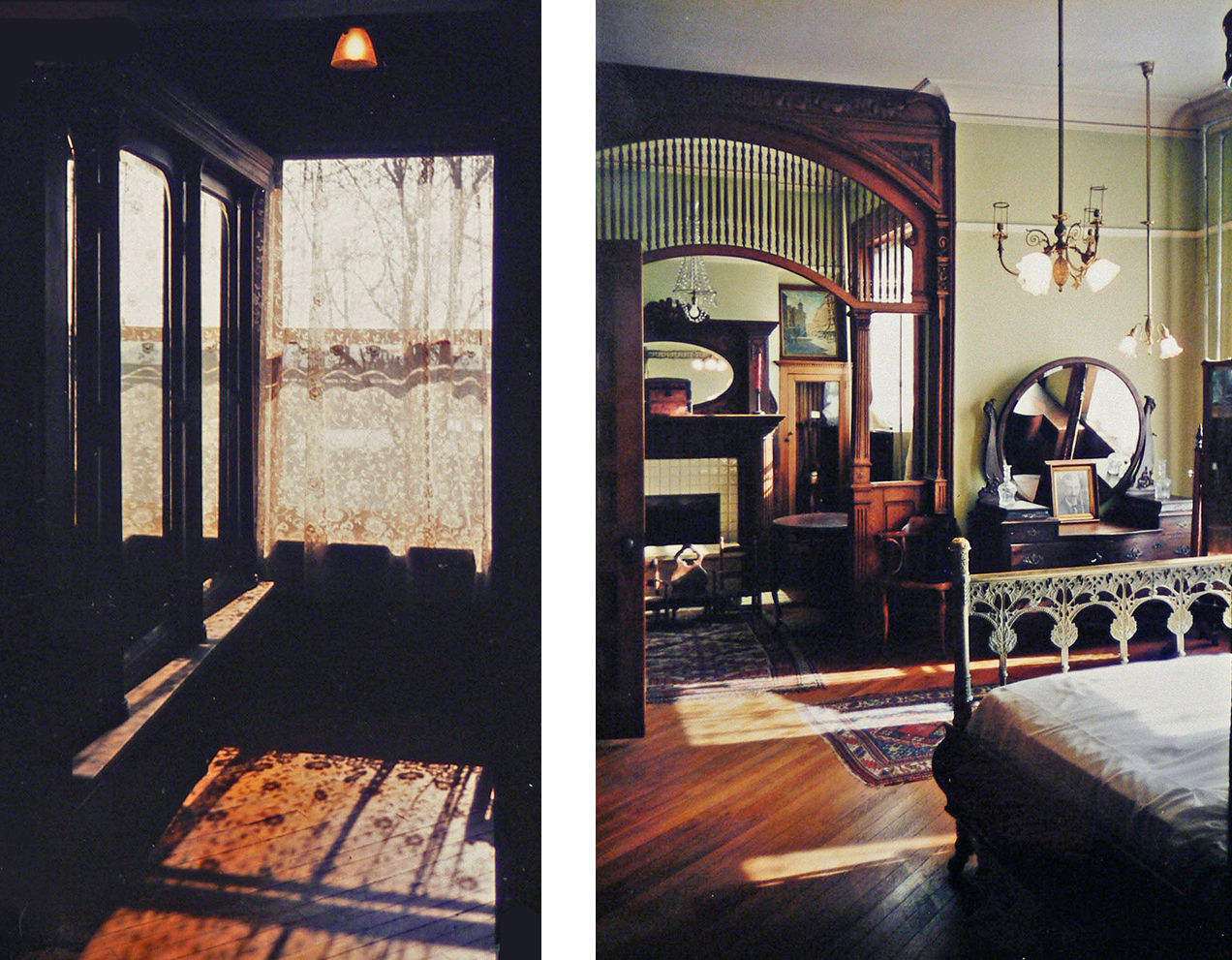
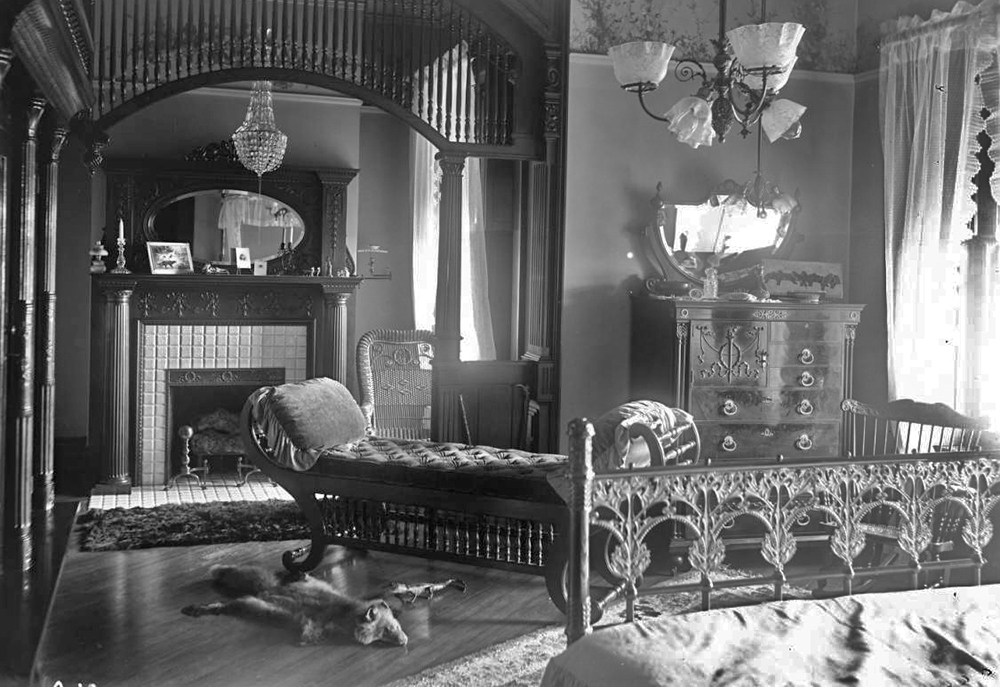

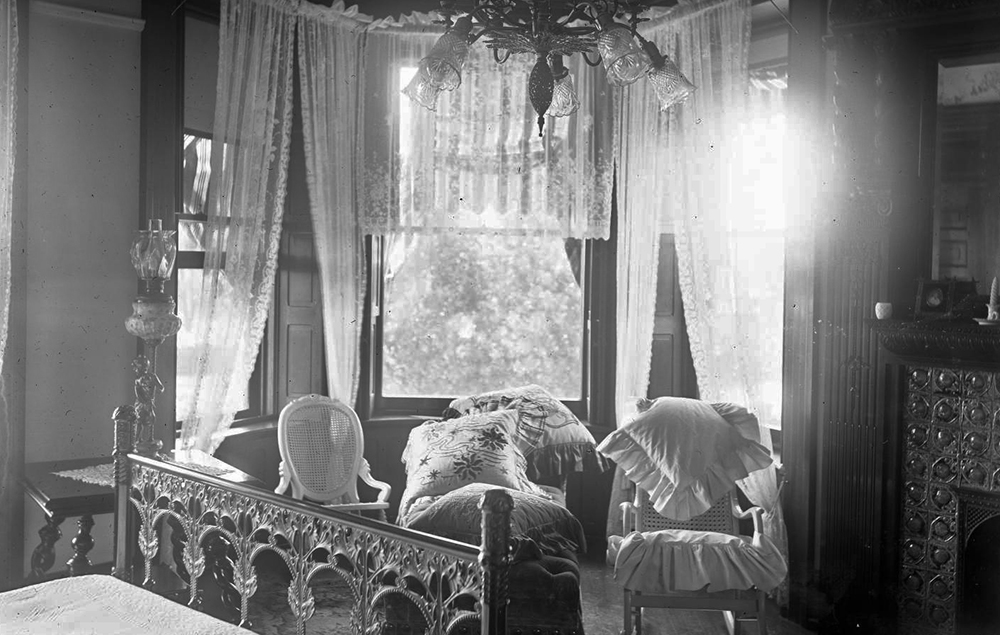
![]()
The bathroom and water closet . . .
![]()
The third floor isn’t open to the public–or at least it wasn’t in the mid-90’s when I visited. Below are the bedrooms, including the tower bedroom I used as a model for Djinn’s room at the Eyrie.
Djinn only stared and then led the way to her room, an attic tower with folded shutters and a round ribbed ceiling. Djinn walked over to a heavy roll top desk, pulled out a large sketchbook, and started drawing with quick, fluid strokes. The soft scratching of her pen was the only sound I heard. Even the house had ceased its creaking.

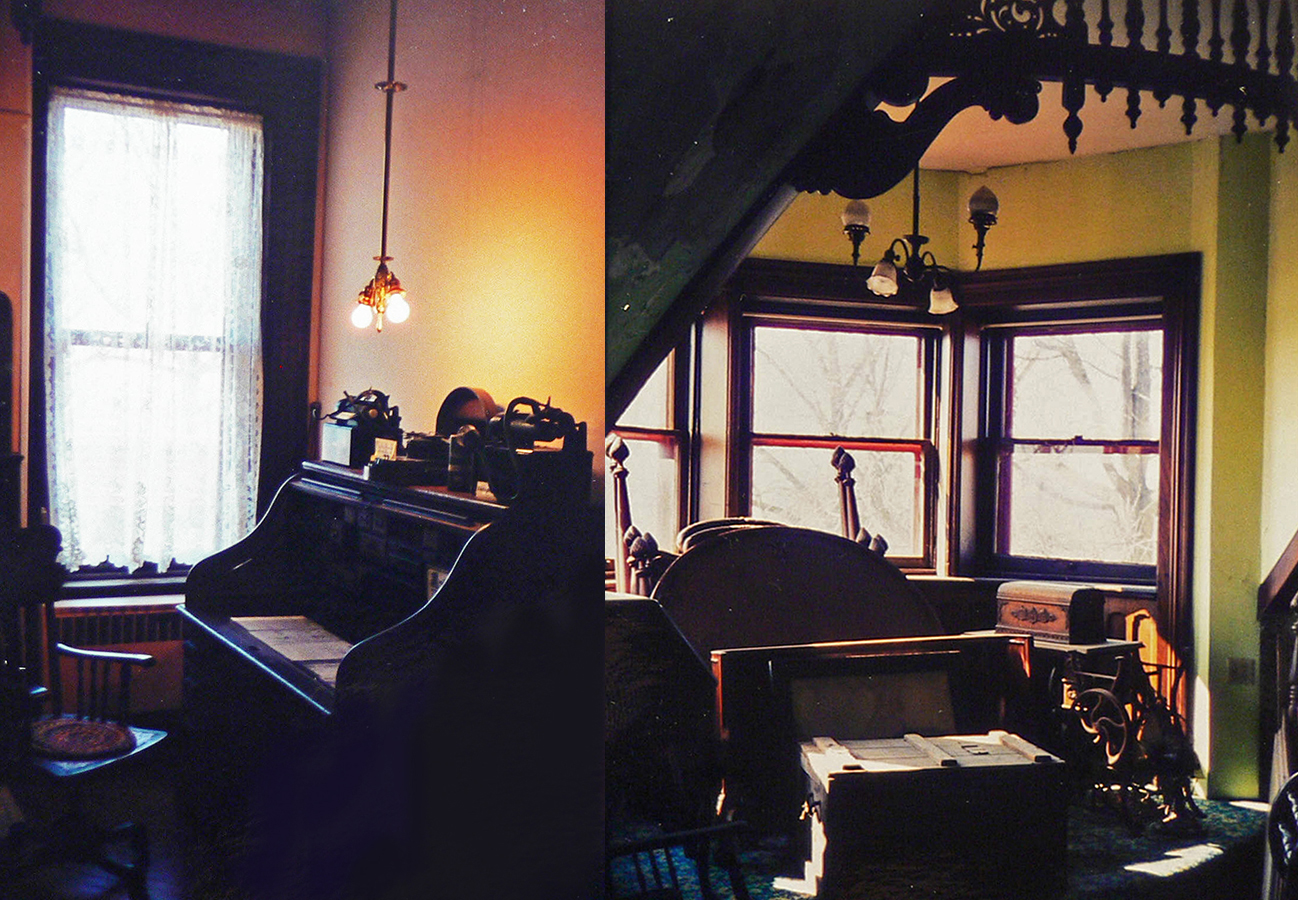
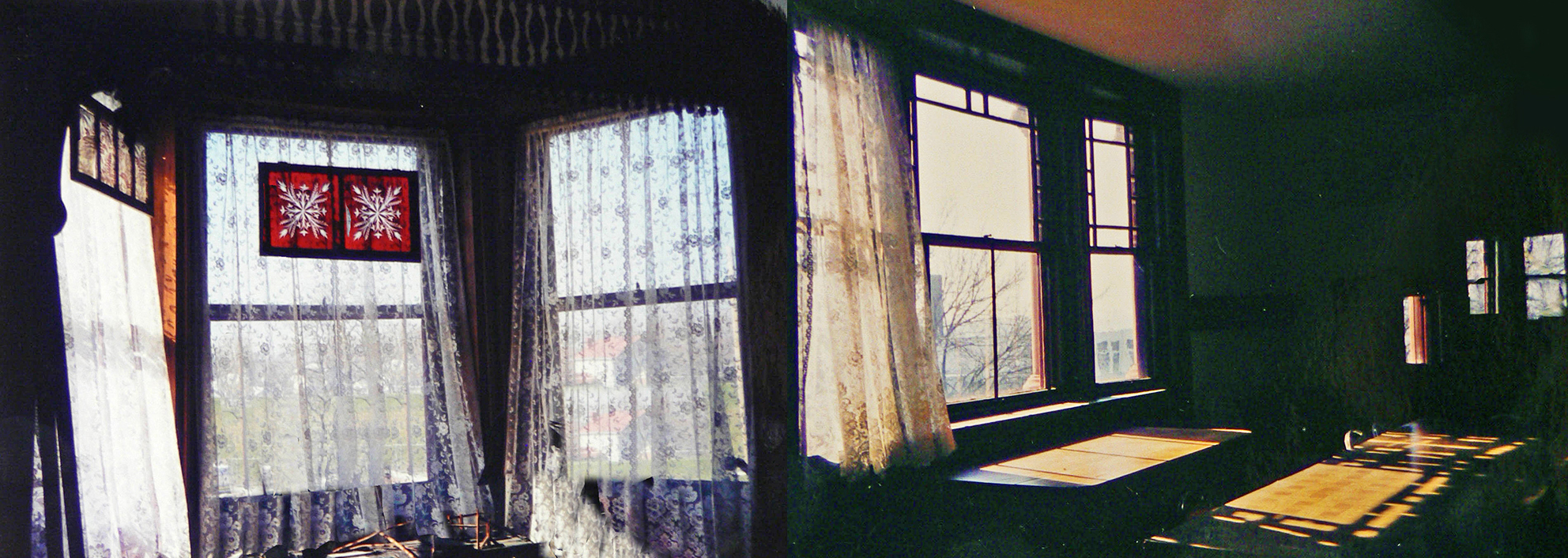
![]()
And last, the attics . . . hobby horses, bicycle frames, and a stuffed owl!

![]()
I hope you enjoyed your tour! Any details I didn’t explain probably came out of my own teeming imagination.

